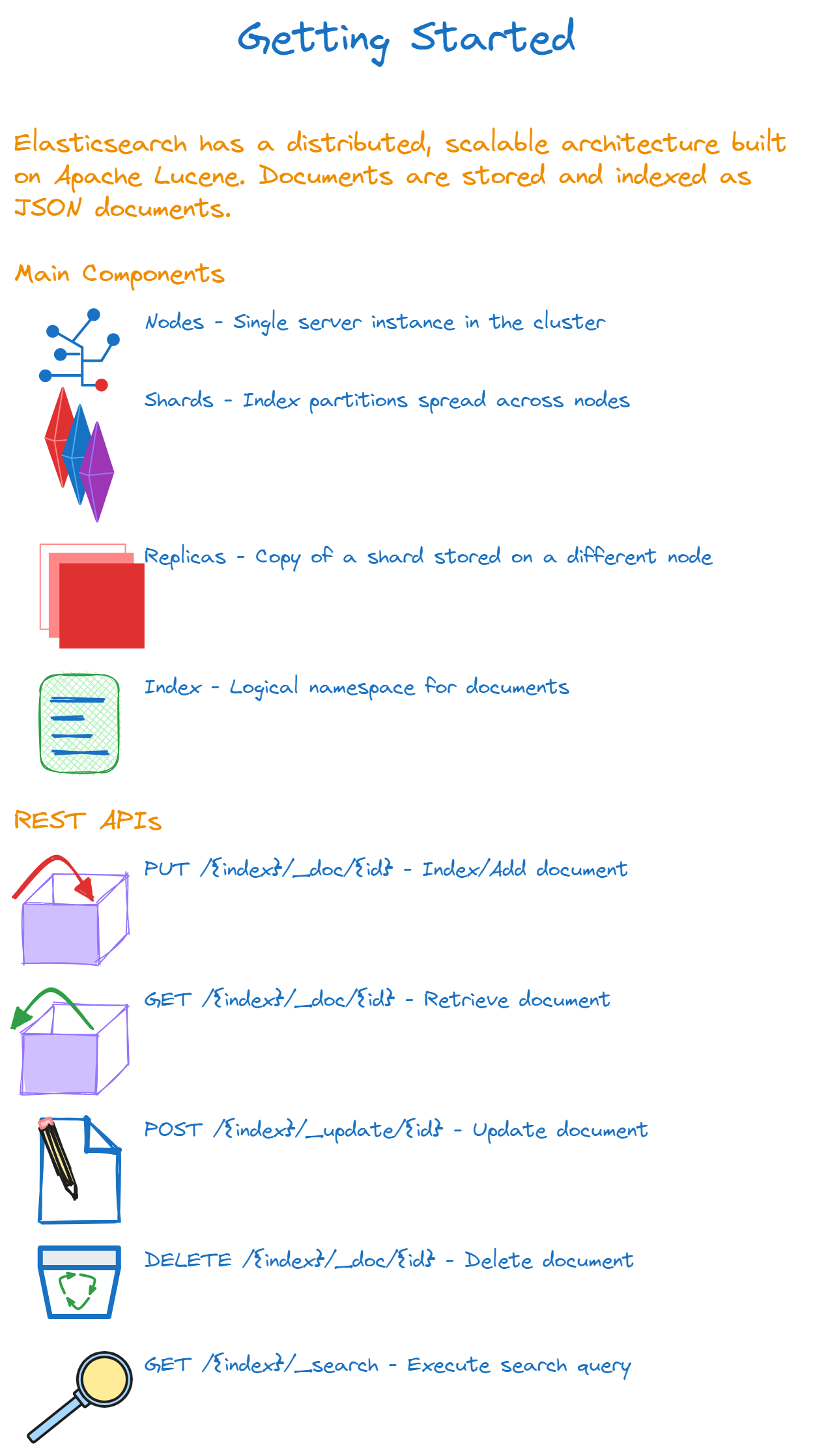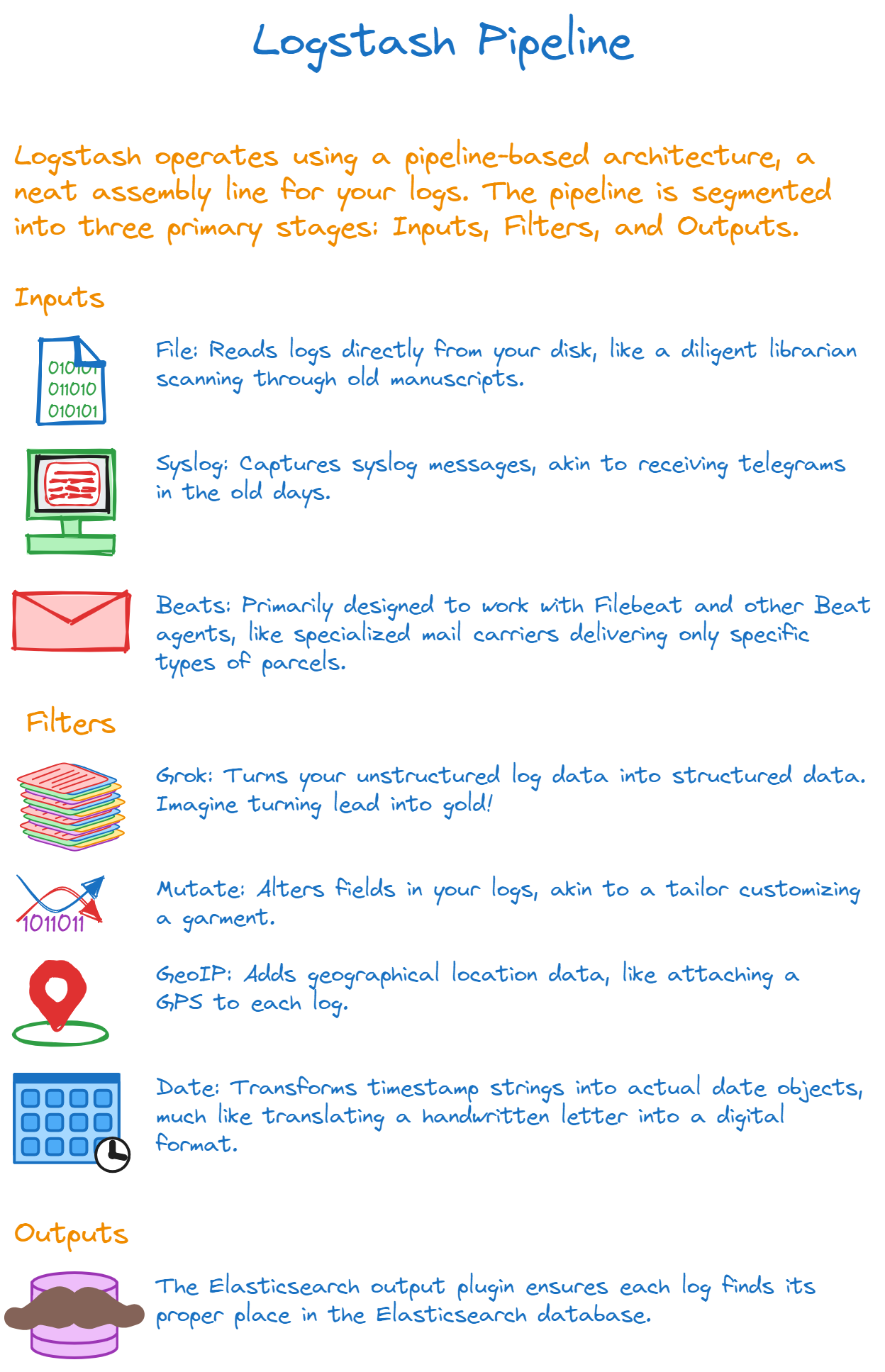A Comprehensive Guide to Centralized Logging with the ELK Stack

Why Logging Matters
The Vital Role of Logging
Logging serves as the central nervous system of modern software applications. Think of it as the black box of an airplane—it records every event, error, and transaction that occurs during the application's lifecycle. This invaluable data helps developers to debug issues, scrutinizes the system's overall health, and even unlocks insights into user behavior.
The Age-Old Methods and Their Drawbacks
Limitations of Traditional Logging
In yesteryears, logging was often done to local text files or shown on a console output. Imagine each log as a handwritten letter—scattered in different rooms of a house, difficult to search through, and prone to wear and tear. Deleting old logs? That's akin to cleaning each room one by one—a laborious manual process.
The ELK Stack: Your Logging Sanctuary
An Overview of the ELK Components
Enter the ELK stack, the multi-story library of the digital world where each log finds its rightful place. It's a centralized architecture consisting of three main pillars:
Elasticsearch: Picture this as the vast library catalog system. It indexes and stores logs, making it easy for you to find the exact information you need. With capabilities like full-text search and real-time data analysis, Elasticsearch can easily scale out to handle even the Library of Congress of log data.
Logstash: Consider this the diligent librarian. It collects logs from various rooms (or sources, in our case), categorizes them, and then meticulously places them where they belong—in Elasticsearch. With over 200 plugins, Logstash can work with virtually any data source.
Kibana: This is the visually appealing library map and guide. Kibana lets you search through your logs and even gives you a graphical representation of your data. Looking for trends or setting up alerts? Kibana has got you covered.
The Advantages of Using the ELK Stack
Why Centralized Logging is a Game Changer
The ELK stack is not just about tidying up; it's about supercharging your logging capabilities. Here are the remarkable benefits you'll experience:
One-Stop Shop for Logs: No more jumping between files and folders. All logs are in one centralized location.
Powerful Search and Filters: Find the needle in the haystack—quickly and accurately.
Custom Visualizations: Create your own story with customizable dashboards that make data analysis a breeze.
Scalability: Whether you're logging data for a small app or an enterprise system, ELK can handle it all.
Enhanced Security: With centralized logging, implementing robust security and access control measures becomes a whole lot easier.
Getting Started with Elasticsearch
Elasticsearch has a distributed, scalable architecture built on Apache Lucene. Documents are stored and indexed as JSON documents.

The main components are:
- Nodes - Single server instance in the cluster
- Shards - Index partitions spread across nodes
- Replicas - Copy of a shard stored on a different node
- Index - Logical namespace for documents
Elasticsearch can be installed on Linux, Windows, Docker, and the cloud. The basic steps are:
- Download and install Elasticsearch binary or Docker image
- Update configuration file with network, cluster, node settings
- Start Elasticsearch service
- Test it out by indexing and searching sample data
Elasticsearch provides REST APIs for indexing, searching, updating, and deleting documents in indices. Some key APIs include:
- PUT /{index}/_doc/{id} - Index/Add document
- GET /{index}/_doc/{id} - Retrieve document
- POST /{index}/_update/{id} - Update document
- DELETE /{index}/_doc/{id} - Delete document
- GET /{index}/_search - Execute search query
For scalability, we can distribute nodes across servers and geographical regions. Replicas provide redundancy and high availability. Security features like access control, encryption, TLS, and role-based access can be enabled.
The cluster health API and monitoring tools like Cerebro allow managing and monitoring our Elasticsearch cluster.

Are you sure you're getting this? Click the correct answer from the options.
Which one of these is NOT a way to scale an Elasticsearch cluster?
Click the option that best answers the question.
- Distribute nodes across servers
- Distribute nodes across geographical regions
- Add plugins early on in the workflow
- Use replicas to provide redundancy
Understanding the Logstash Pipeline

The Essence of Pipeline Architecture
Logstash operates using a pipeline-based architecture, a neat assembly line for your logs. Think of it like a high-tech recycling plant: raw materials (logs) enter, get processed and transformed, and then emerge as useful products (structured data). The pipeline is segmented into three primary stages:
- Inputs: The gates where raw materials come in.
- Filters: The transformation units.
- Outputs: The exit ramps leading to their final destination.
Types of Input Plugins
The Gatekeepers of Your Data
Logstash's input plugins serve as the "reception desks" where various types of data are received. Whether it's a text file or a stream of online messages, Logstash has a plugin to handle it. Here are some commonly used input plugins:
File: Reads logs directly from your disk, like a diligent librarian scanning through old manuscripts.
Syslog: Captures syslog messages, akin to receiving telegrams in the old days.
Beats: Primarily designed to work with Filebeat and other Beat agents, like specialized mail carriers delivering only specific types of parcels.
Filters: The Data Refineries
The Alchemists of Log Data
Once the data is in, it's time for some alchemy. Filters transform the raw, unstructured data into structured, enriched logs. Here are examples of some powerful filter plugins:
Grok: Turns your unstructured log data into structured data. Imagine turning lead into gold!
Mutate: Alters fields in your logs, akin to a tailor customizing a garment.
GeoIP: Adds geographical location data, like attaching a GPS to each log.
Date: Transforms timestamp strings into actual date objects, much like translating a handwritten letter into a digital format.
Output to Elasticsearch
The Final Destination
Once the logs are all dressed up, they're ready for the ball—your Elasticsearch cluster. The Elasticsearch output plugin takes care of this, ensuring each log finds its proper place in the Elasticsearch database.
Installation and Configuration
Setting Up Your Pipeline
Logstash can be set up using various methods such as repositories, binaries, or even Docker containers. The pipeline logic is defined in a configuration file, serving as the blueprint for your data processing plant.
Sample Configuration
Here's a snippet of what a Logstash configuration might look like:
1input {
2 beats {
3 port => 5044
4 }
5}
6
7filter {
8 grok {
9 # Patterns for parsing log lines
10 }
11
12 geoip {
13 # Add geoip location
14 }
15}
16
17output {
18 elasticsearch {
19 hosts => ["elasticsearch:9200"]
20 }
21}This example demonstrates a pipeline that starts with Beats input, undergoes some transformation and enrichment through filters, and then is shipped off to an Elasticsearch cluster.
The Power of Logstash
A Versatile Data Processor
Logstash is not just a log processor; it's a powerful tool that can harmonize a plethora of disparate data sources. Through its plugin ecosystem and robust processing capabilities, Logstash transmutes raw, chaotic data into structured, query-ready logs.
Mastering Structured Logging: Strategies and Tools

Why Structured Logs Matter
Structured logging moves beyond the conventional text-based logging to create logs that are easy to read, filter, and analyze. Imagine the difference between a cluttered desk and an organized filing cabinet. Structured logs are the filing cabinet—each piece of information has its designated slot, making it easier to find what you're looking for.
Importance of Structured/Parsed Logs
Parsed logs are like well-organized grocery lists—each item is categorized, making your shopping (or in this case, debugging) experience smooth and efficient. Structured logs can be filtered based on specific fields, enabling quick searches and real-time analytics.
Using Logstash Grok Filter for Parsing
The Grok filter in Logstash acts like a Swiss army knife for your logs, offering a range of tools to parse and structure even the most complex log data. It utilizes pattern matching to transform unstructured logs into a structured format, enriching the data for easier querying and analysis.
Best Practices for Log Formatting
Proper log formatting is akin to good storytelling; it should offer all the necessary details without overwhelming the reader. Some best practices include:
- Use key-value pairs for easy querying
- Include timestamps in a standard format
- Log events, not just errors
- Use consistent terminology and naming conventions
Integrating Beats for Log Shipping
The Couriers of Your Log Data
Beats serve as the couriers in your logging pipeline, ensuring data reaches its destination—be it Logstash or Elasticsearch. These lightweight agents are easy to install and offer a variety of modules tailored for different data types.
Filebeat for Forwarding and Centralizing Logs
Filebeat is like the traffic cop standing at the busiest intersection of your application, directing logs to their proper destinations. It monitors log files, tailing them in real-time, and forwards this data to Logstash or Elasticsearch for further processing and storage.
Metricbeat for Metrics and Stats
Metricbeat collects various system metrics and statistics, acting like the statistician of your application ecosystem. From CPU usage to memory statistics, Metricbeat gathers valuable data and ships it to your analytics engine for monitoring and alerting.
Your System's Health Monitor
Heartbeat does precisely what its name suggests—it keeps tabs on the 'heartbeat' or uptime of services. It periodically checks the status of your applications and services, sending this data to your monitoring system. It's like a fitness tracker for your software, ensuring everything is up and running smoothly.
Archiving Logs with Curator
As logs age, their immediate utility diminishes, but you might still need them for compliance or historical analysis. Curator acts as a time capsule, helping you manage log data by archiving older records. You can define policies for retention, ensuring that you keep only the logs that are truly valuable.
Visualizing Logs with Kibana

Kibana is the visualization layer that enables analyzing and visualizing log data in Elasticsearch.
It can be installed on the same servers as Elasticsearch or on dedicated machines. Kibana is configured via a yml file to point to the Elasticsearch hosts.
Kibana provides a web interface for various capabilities:
Discover: Search and filter logs with visually customizable results. Supports field-level highlighting, statistical aggregations, and GeoIP coordinates.
Visualize: Build interactive charts, graphs, and maps from log queries. Common visuals include line charts, histograms, pie charts, heatmaps, and more.
Dashboard: Combine visualizations into customizable dashboards and share them with users.
Timelion: Time series data analysis and visualizations.
Alerting: Create monitors that trigger email notifications when certain conditions are met.
APM: Application performance monitoring and tracing.
Kibana empowers developers, IT ops, and business analysts to extract insights from log data. It enables creating operational monitoring dashboards, analyzing usage trends, and debugging issues in real-time.
Best Practices and Advanced Techniques
There are various best practices for getting the most from the ELK stack:
Use log forwarding agents like Filebeat for log shipping. This decouples data pipelines.
Enable TLS for encrypting connections between components. Restrict network access where possible.
Use indexes wisely to segregate logs rather than sending all logs to one index.
Monitor cluster health, shard volumes, JVM heap, and other metrics.
For high availability, have multi-node Elasticsearch clusters with replication.
Use Curator to optimize, back up, and delete old log indices.
Ingest metrics into Elasticsearch for combined log analytics and monitoring. Visualize metrics time-series with Kibana.
Build integrations with CI/CD pipelines, application monitoring, and ITSM tools using the ELK APIs.
Let's test your knowledge. Is this statement true or false?
You should include timestamps in logs.
Press true if you believe the statement is correct, or false otherwise.
ELK Alternatives
Some alternatives to the ELK stack include:
Graylog - Open source centralized logging platform with similar capabilities to ELK. Focuses more on out-of-box functionality rather than flexibility.
Splunk - Leading proprietary log management platform aimed at large enterprises. Provides machine learning capabilities. High licensing costs.
Sumo Logic - Hosted log analytics and monitoring solution. Good for cloud-native stack with aggregated views.
Compared to ELK, Graylog prioritizes simplicity, while Splunk provides premium features at higher costs. The ELK stack strikes a balance - it is flexible, cost-efficient, and has an abundance of community support.
One Pager Cheat Sheet
- The article discusses how centralized logging with the ELK stack (comprising of Elasticsearch, Logstash, and Kibana) can overcome the limitations of traditional logging methods by offering a scalable, one-stop shop for logs, powerful search and filters, custom visualizations, and enhanced security.
- Elasticsearch, built on Apache Lucene, is a distributed, scalable architecture that stores and indexes documents as
JSON documents, and its main components includeNodes,Shards,Replicas, andIndex. It can be installed on multiple platforms, and provides REST APIs for key functions such as indexing, searching, updating, and deleting documents; it also supports scalability and various security features, and allows cluster management and monitoring through the cluster health API and tools like Cerebro. Adding plugins early on in the workflowdoesn't scale an Elasticsearch cluster as it mainly extends functionality, not capacity; key scaling methods include distributing nodes and setting up replicas, while prematurely adding plugins may introduce unnecessary complexity.- Logstash employs a pipeline-based architecture consisting of three stages: Inputs, where various data types are received; Filters, which transform raw data; and Outputs, which direct the processed data to their final destination. It features various plugins for each stage including File, Syslog, and Beats for inputs; Grok, Mutate, GeoIP, and Date for filters; and an output plugin for Elasticsearch. Through
Logstash configuration, data processing logic is defined, transforming raw data into structured, query-ready logs. - Kibana is a tool for analyzing and visualizing log data in Elasticsearch, offering features such as discover, visualize, dashboard, timelion, alerting, and APM which aid in extracting insights from log data and creating operational dashboards, analyzing trends, and debugging issues in real-time.
- The article discusses the importance of structured logging and offers strategies and tools for mastering it, emphasizing the use of
Logstash's Grok filterfor parsing logs, best practices for log formatting, and variousBeats (Filebeat, Metricbeat, Heartbeat)modules for log shipping and monitoring your system's health. Additionally, it mentions the use ofCuratorfor archiving logs. - The best practices for optimizing the ELK stack include using log forwarding agents like
Filebeat, enabling TLS for secure connections, strategically using indexes, monitoring various metrics, ensuring multi-node Elasticsearch clusters with replication for high availability, utilizingCuratorfor log index management, ingesting metrics into Elasticsearch for combined analytics and monitoring, and integrating with CI/CD pipelines and ITSM tools using the ELK APIs. - Including
timestampsin logs is vital as it facilitates tracing the sequence of events, determining when specific events took place, and allows tools like the ELK stack to index and search logs based on their timestamps and for visualizing log data over time. - Graylog, Splunk, and Sumo Logic are viable alternatives to the
ELK stack, offering varying advantages such as simplicity, premium features, and cloud-native stack support respectively.



